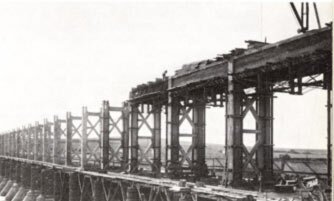Vaal Triangle History
1889 - 1902
Sharpeville
Klip Power Station
William Stow
Coal
Vereeniging
1960
1939 - 1945
Peace Negotiations
Viljoensdrift
1935
Riviera Hotel
Vereeniging History
At the time of the epidemic, the only hospital serving the town was a huddle of wood and iron buildings on the property of the Vereeniging Brick and Tile Company, which had been used by Lord Kitchener during the peace talks.
On November 13, 1919, Mayor Aaron David Berkowitz called a meeting in the Masonic Hall to "promote a scheme for the establishment of a general hospital for his town and district". Although the Administrator had promised £3,000 towards the cost of a hospital, at a later interview the Town Council was told that the municipal ordinances gave the Council no authority to build a hospital. This the Council knew, but it had hoped to obtain special permission.
At the time, Vereeniging's population was estimated to number 2,000 whites and 3,000 non whites, and the estimated cost of a hospital to serve them was £10,000 and maintenance about £2,000 a year. A hospital committee was formed and a delegation despatched to see the Administrator who pledged a subsidy on a £1 for £1 basis and threw the onus on the local community to raise half the money required for a hospital. Over the following years efforts were made to keep the issue alive but it was some time before the first public hospital was erected.
In the meantime Vereeniging was gathering importance as an area with great industrial potential, and in 1919 the Government Engineer informed the select committee of the Rand Mines Power Bill that Vereeniging was one of the finest areas in South Africa for industrial purposes; it had water and it had coal - and cheap electric power was available from the Victoria Falls and Transvaal power station.
Vereeniging had increased in importance as a railway centre and Sir William Hoy, then general manager of the South African Railways, and an intimate friend of Senator Marks, reported that in 1919, the tonnage handled at Vereeniging station had risen to 596,688.
Senator Samuel Marks died in 1920. As the father of Vereeniging he left behind him a town with a rich inheritance and an unlimited future. After his death, Vereeniging Estates was administered by his sons, Louis, Teddy and Joe Marks.
On November 13, 1919, Mayor Aaron David Berkowitz called a meeting in the Masonic Hall to "promote a scheme for the establishment of a general hospital for his town and district". Although the Administrator had promised £3,000 towards the cost of a hospital, at a later interview the Town Council was told that the municipal ordinances gave the Council no authority to build a hospital. This the Council knew, but it had hoped to obtain special permission.
At the time, Vereeniging's population was estimated to number 2,000 whites and 3,000 non whites, and the estimated cost of a hospital to serve them was £10,000 and maintenance about £2,000 a year. A hospital committee was formed and a delegation despatched to see the Administrator who pledged a subsidy on a £1 for £1 basis and threw the onus on the local community to raise half the money required for a hospital. Over the following years efforts were made to keep the issue alive but it was some time before the first public hospital was erected.
In the meantime Vereeniging was gathering importance as an area with great industrial potential, and in 1919 the Government Engineer informed the select committee of the Rand Mines Power Bill that Vereeniging was one of the finest areas in South Africa for industrial purposes; it had water and it had coal - and cheap electric power was available from the Victoria Falls and Transvaal power station.
Vereeniging had increased in importance as a railway centre and Sir William Hoy, then general manager of the South African Railways, and an intimate friend of Senator Marks, reported that in 1919, the tonnage handled at Vereeniging station had risen to 596,688.
Senator Samuel Marks died in 1920. As the father of Vereeniging he left behind him a town with a rich inheritance and an unlimited future. After his death, Vereeniging Estates was administered by his sons, Louis, Teddy and Joe Marks.
All through the year in which Marks died, and in the year that followed (1921), 25 miles downstream from Vereeniging at
Lindequesdrift there was a hive of activity. Construction workers were racing to complete the Rand Water Board's Barrage which was to back up the waters of the Vaal for over 40 miles and submerge Leslie's weir at Vereeniging. At the same time the present road bridge was being built to span the higher level of the river.
Among the world's largest water supply organisations, the Rand Water Board was established in 1903 to deliver
Chapter 11: Town and Council 1919 -1927


Page 42


The Barrage nearing completion
The completed Barrage impounds the waters of the Vaal.